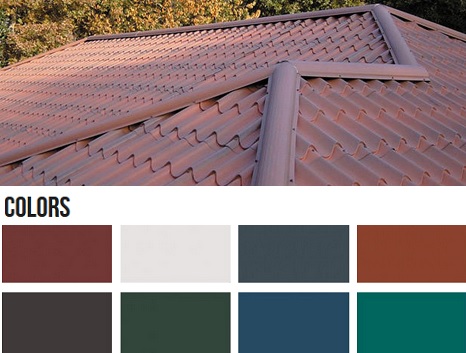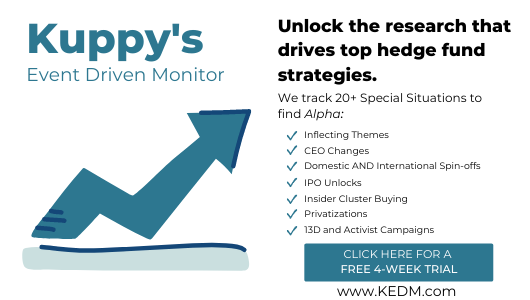Central banks jacked up rates to catch up with run-away inflation, but most fell further behind; only Russia caught up. The Fed didn’t even try.
By Wolf Richter for WOLF STREET.
The Czech National Bank dished out another surprise today, raising its main policy interest rate by 100 basis points to 3.75%, the highest since February 2008, and the fifth rate hike this year. A hefty rate hike had been expected, but not this hefty: None of 11 analysts polled by Reuters predicted a 100-point hike.
At its prior meeting on November 4, the CNB had jacked up its policy rate by 125 basis points, the biggest shock-and-awe rate hike in 24 years. Since June, when it began its rate-hike tango, the CNB jacked up its policy rate by 350 basis points, from 0.25% to 3.75%.
This sense of urgency – sorely lacking from the Fed – was motivated by red-hot inflation which hit 6.0% for November, the highest since 2008, amid supply chain bottlenecks, labor shortages, and spiking energy prices.
Ironically, the Fed, which is confronted with an even higher inflation rate – 6.8% in November – hasn’t yet raised the target range for its policy rate, which is still stuck near 0%.
The Central Bank of Russia, on December 17, raised its policy rate by another 100 basis points to 8.5%, its seventh rate hike this year, totaling 425 basis points, from 4.25% to 8.5%, pressured by surging inflation, particularly food price inflation. Overall inflation in Russia hit 8.4%, food inflation hit 10.8%.
This makes the Central Bank of Russia the only central bank whose rate hikes have actually caught up with inflation. Interest rates that are below the rate of inflation are still stimulative and inflationary; Russia has reached some level of neutral.
Since July, the Bank of Russia has been using the term “persistent” in its statements to describe this inflation, while the Fed’s Powell was still clinging ludicrously to “transitory” and “temporary.”
The Bank of the Republic (Colombia), also on December 17, hiked its policy rate by 50 basis points to 3.0%, the third rate hike in a row, totaling 125 basis points since liftoff at 1.75% in September. Inflation hit 5.3% in November.
The Bank of England, on December 16, raised its policy rate by 15 basis points for liftoff, to 0.25%, dishing out a surprise to markets, after having walked back expectations of a rate hike at this meeting. Inflation in the UK surged to 5.1% in November, the worst in 10 years.
The BoE could start Quantitative Tightening as soon as February next year. In a strategy paper last summer, the BoE said that it would stop reinvesting the maturing bonds on its balance sheet, and would therefore allow its balance sheet to shrink, once its policy rate reaches 0.5%. A 25-basis-point rate hike to 0.5% could happen at its next meeting in February, which would open the door to QT.
Norges Bank, the central bank of Norway, also on December 16, hiked its policy rate by 25 basis points to 0.5%, its second rate hike, after its September liftoff from 0%. Inflation in Norway jumped massively from 3.5% in October to 5.1% in November, the worst since 2008.
The ECB, also on December 16, announced a sharp reduction of QE, from an average of €92 billion a month currently, to about €40 billion by March, and to €30 billion in Q3, and to €20 billion in Q4.
This reduction is a two-step process: First, the end of its €72 billion a month Pandemic Emergency Purchase Programme (PEPP) by March. To ease the blow of the €72 billion cut, the ECB will raise its classic QE program from €20 billion a month now to €40 billion in March, cutting on net its total QE by €52 billion a month by March.
The Bank of Mexico, also on December 16, surprised markets by raising its benchmark rate by 50 basis points to 5.5%, the fifth rate hike in a row, totaling 150 basis points. Inflation in Mexico has jumped to 7.4% in November, the worst since January 2001.
The Central Bank of Chile, on December 14, dished out a 125-basis-point rate hike, to 4.0%, in line with expectations, following the shock-and-awe surprise 125-basis-point rate hike at its October meeting, and the fourth rate hike since the cycle started in July, totaling 350 basis points.
Inflation surged to 6.7% in November, the worst since 2008, but ironically below inflation in the US, where the Fed had steadfastly refused to even acknowledge inflation as a serious issue until the U-turn in recent weeks.
The National Bank of Hungary, also on December 14, hiked its policy rate by 30 basis points to 2.4%, the seventh rate hike in a row, from liftoff in June at 0.6%. Inflation has spiked to 7.4% in November, the worst since 2007, up from 6.5% in October, and from 5.5% in September. So this is moving fast, much faster than the rate hikes, but at least it’s doing something, unlike the Fed.
The State Bank of Pakistan, also on December 14, jacked up its policy rate by 100 basis points, to 9.75%, after the shock-and-awe 150-basis-point hike in October, and a 25-basis-point liftoff hike in September from 7.0%. The three rate hikes totaled 275 basis points. Inflation in Pakistan spiked to 11.5% in November.
The Central Bank of Armenia, also on December 14, hiked its policy rate by 50 basis points to 7.75%, seventh rate hike in this cycle, from liftoff at 4.25%. Inflation jumped to 9.6% in November.
The Central Reserve Bank of Peru, on December 11, hiked its policy rate by 50 basis points to 2.5%, the fifth rate hike in a row, since liftoff at 0.25%. Inflation was at 5.7% in November.
The National Bank of Poland, on December 8, hiked its policy rate by 50 basis points to 1.75%, third rate hike in a row, totaling 165 basis points, from liftoff at 0.1%. Inflation spiked to 7.8% in November, from 6.8% in October and 5.9% in September – now moving very fast, and the central bank is falling way behind, but not as far behind as the Fed.
The Bank of Brazil, also on December 8, hiked its policy rate by another 150 basis points, to 9.25%. Since March, when the rate hikes started, it has jacked up its policy rate by 725 basis points, from 2.0% to 9.25%, as inflation shot straight up starting last year, to 10.7% in November, the worst since 2003, driven by all the usual suspects, from fuel to housing costs.
The Bank of Korea, on November 25, during its final meeting in 2021, raised its policy rate by 25 basis points to 1.0%, following its 25-basis-point hike in August. Inflation has jumped to 3.7%, the worst since 2012.
The Reserve Bank of New Zealand, on November 24 during its final meeting in 2021, hiked its policy rate by 25 basis points to 0.75%, the second rate hike in a row, after having ended QE cold-turkey in July, and after having created the worst housing bubble in the world.
The South Africa Reserve Bank, on November 18, during its final meeting in 2021, hiked its policy rate by 25 basis points to 3.75%, marking liftoff. Inflation hit 5.5%.
The Central Bank of Iceland, on November 17, hiked its policy rate by 50 basis points to 2.0%, fourth rate hike since liftoff in May from 0.75%. Inflation has surged to 5.1%, the highest since 2012.
The Bank of Japan, like the Fed and the ECB, has not hiked rates yet. And unlike the Fed and the ECB, it is not yet under red-hot pressure from inflation and housing bubbles. But ahead of the Fed and the ECB, the BoJ has ended its super-massive QE in May, after beginning the taper in the fall last year, when Abenomics came to an end with the exit of Prime Minister Shinzo Abe. And so one of the biggest money printers in the world has stopped printing money, which is a start.
And where is the Fed? Powell, after downplaying inflation all year, finally declared that inflation is a “big threat.” The Fed has cut its asset purchases, promised to end them entirely no later than March, discussed Quantitative Tightening, and put some timid rate hikes on the table for next year. But all this is too little too late, as inflation in the US has reached the worst level in 40 years, and is worse than in many of the countries listed here that have already jacked up their policy rates multiple times to tamp down on inflation, while the Fed’s policy rates are still near 0%, and it’s still printing money.
Enjoy reading WOLF STREET and want to support it? Using ad blockers – I totally get why – but want to support the site? You can donate. I appreciate it immensely. Click on the beer and iced-tea mug to find out how:
Would you like to be notified via email when WOLF STREET publishes a new article? Sign up here.
![]()
Classic Metal Roofing Systems, our sponsor, manufactures beautiful metal shingles:
- A variety of resin-based finishes & colors
- Deep grooves for a high-end natural look
- Maintenance free – will not rust, crack, or rot
- Resists streaking and staining
To reach the Classic Metal Roofing folks, click here or call 1-800-543-8938


